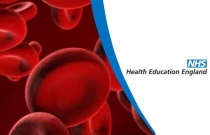SHOT - Module 2 - Reporting to SHOT
NHS, eIntegrity, elfh
This module will provide an overview of the reporting categories used by SHOT and will allow you to explore real case studies that will help you to choose the correct reporting category for a range of situations. The module also covers the investigation of transfusion-related incidents and how these are reported.
Midwifery Identification, Stabilisation and Transfer of the Sick Newborn (MIST)
Dr Wendy Tyler, Mrs Susan Braid, Mrs Emma Morris, Dr Alan Fenton, Jacqui Angell, Paula Pryce.
This elearning programme is aimed at midwifery and ambulance personnel to support the treatment plan for newborn babies who are, or have the potential to become, unwell following delivery in a community setting. The resources are designed to equip maternity and emergency teams with the knowledge required to extend care beyond th....
Ethical Imperatives for Collaborative Research
Professor Zubairu Iliyasu
Ethical Imperatives for Collaborative Research in Nigeria
Learner and Mentor session 2
Johns Hopkins University Affiliate
Learner and Mentor meet in-person or virtually (organized via SMS, What’s App, etc.) to assess progress.
Practice Sessions. Expanding on Oral PrEP Participant Progress Checklist
Johns Hopkins University Affiliate
This event serves to control the progress of the user during the Expanding Oral PrEP learning path. As the learner you must register to the event to claim attendance to the practice sessions organized with the mentors and reviewers. This will grant them access to the assessment sheet for the practice sessions. The reviewe....
LONG exam test
Mr WCEA Administrator
test test test test test test test test test test test test test
Infection Control: Diarrhoea in an Inpatient
William Newsholme and Frances Sanderson
This session is about the management of diarrhoea developing in an inpatient. It gives you the opportunity to practice your diagnostic skills as well as to assemble an appropriate management plan.
Les infections néonatales bactériennes
Marguerite EDONGUE HIKA
Véritable problème de santé publique dans les pays en voie de développement. Prise en charge non homologuée, et prévention moins couteuse que le traitement.
Blended Learning for Oral PrEP
Phelelo Marole
The goal of the webinar is to promote a new blended learning Oral PrEP course, available on the Botswana Nursing and Midwifery Council CPD platform, and share lessons learned during recent implementation within the Buhmmi project. The Oral PrEP blended learning course features the eLearning course produced by WHO and Jhpiego, w....
Pharmacy in Primary Care
Suraj Varia
The Pharmacy in Primary Care programme is aimed at hospital-based pre-registration pharmacists to aid their learning of the Community Pharmacy contract and provision of unscheduled care in the community. The programme will also introduce trainees to the role of the General Practice (GP) Pharmacist.
Stratified Care of Low Back Pain
Gail Sowden, Nadine E Foster and Jonathan Hill
Stratified care for back pain is about offering the right treatment to the right patient at the right time, thereby maximising treatment benefit, reducing harm and increasing healthcare efficiency. The clinical information is provided as learning resource only, and is not intended to replace, or constitute clinical guidelines....
COURSE PRE TEST
Mr WCEA Administrator
Course Description* Please add a course description with a minimum of 20 characters.
EXAMPLE PRETEST SAME AS EXAM
Mr WCEA Administrator
Please add a course description with a minimum of 20 characters.
EXAMPLE PRE-TEST
Mr WCEA Administrator
Course Description* Please add a course description with a minimum of 20 characters.
Nursing Law Update
Sue Dill Calloway, RN, MSN, JD
During this program, we will review recent CMS memos and what every hospital must have to avoid deficiency reports. Additionally, our expert will identify hot and problematic standards and explain how to overcome them. Attendees will learn real-life examples to illustrate the current requirements and how to remain compliant.....
Çocuklarda suprakondiler humerus kırıkları
Dr. Önder Kalenderer
Suprakkondiler bölge anatomisini Suprakondiler kirik olusma mekanizmalarini Suprakondiler kirik tiplerini Tedavi seklini Beraberinde olan yaralanmalari ve tedavilerini Komplikasyonlarini ve nasil yönetecegini ögrenir
Tümör Radyolojisi Soruları
Dr. Yusuf YILDIZ
Sunum Akış Şeması Röntgen incelemenin kuvvetli ve zayıf noktaları Kemikte tümörlerin yerleştiği bölgeler Kemik destrüksiyon tipleri Periost reaksiyonları Sintigrafi, BT, MRG ve PET
Language Matters - Rethinking How We Talk About People and Problems
John Koop Harder, MSW, RSW
The Crisis and Trauma Resource Institute Language and meaning are interconnected. The words we choose communicate deeply and influence how we understand and work with people and their problems. This webinar explores how developing awareness about language and choosing the right words are essential for an effective counseling re....






















